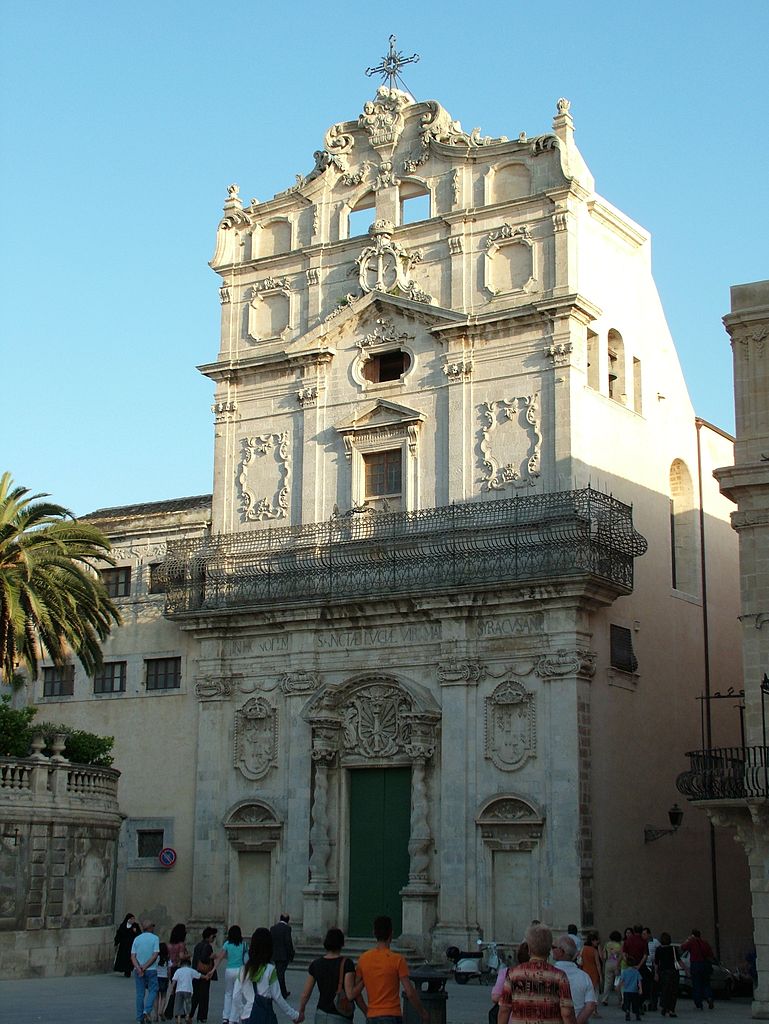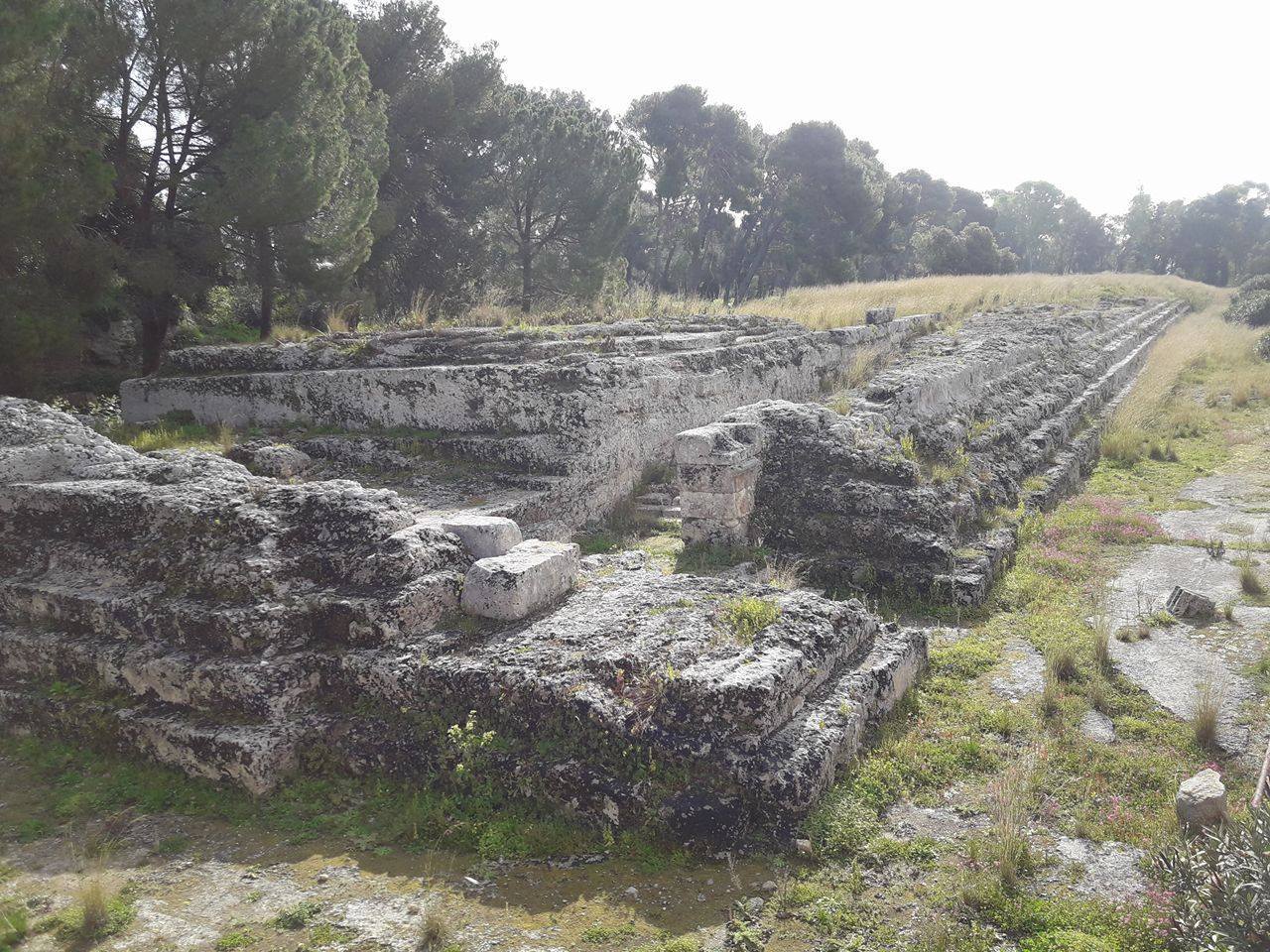St. Lucy alla Badia and Caravaggio
The Church of St. Lucy alla Badia, with the annexed monastery, was completely destroyed by eartquake del 1693. Little is known about the old church, some sources attribute its construction (or improvement) in the fifteenth century at the behest of Queen Isabella, wife of Ferdinand of Castile, on the site where the saint was raped. Only two years after the earthquake, the church was rebuilt in the Baroque style that characterized the period.
The architect Luciano Caracciolo designed and directed the works finished in 1703. The nuns wanted a larger church than the previous one and with a greater symbolic value on the square that was the center of religious and political life of Ortigia. For this reason they moved the entrance of the church from Via Picherali to the square, the two sides of the church were so to the west, down to the Fountain Aretusa,and east, within the cloister of the monastery, the high altar and the chapel around noon.
The current elevation, 25 meters high, presents two orders separated by the wrought iron balcony that runs across the entire width. The portal is framed by two twisted columns and the tympanum with the symbols of the martyrdom of Saint Lucia; to the sides of the portal there are the frames containing the coats of arms of the Spanish royal family. The upper order is inspired by the Rococo style. On the top there is a jagged pediment with putti heads and the cross, currently removed since it was unsafe.
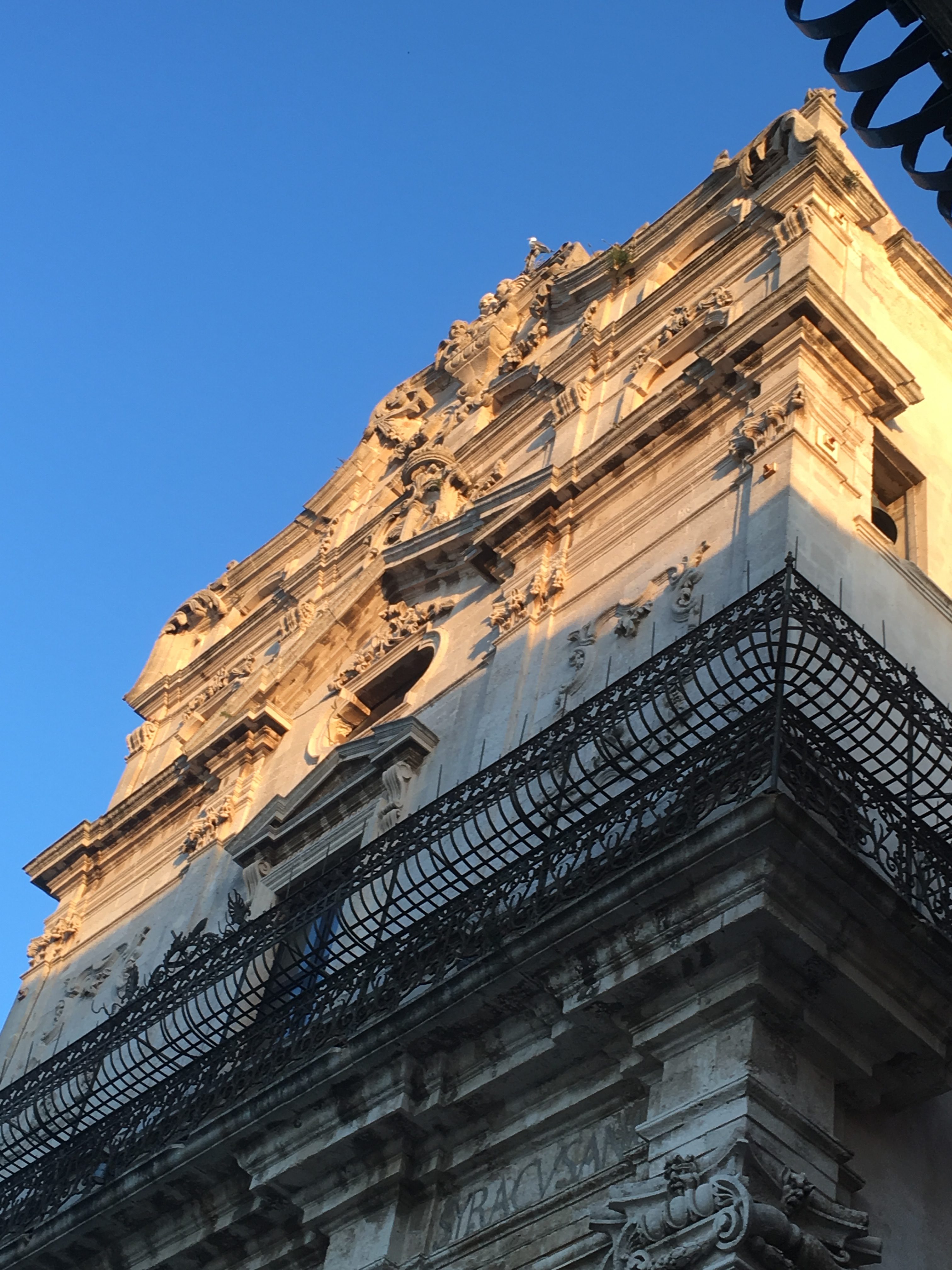
The plan of the Church of St. Lucy alla Badia is composed of a single large rectangular nave, closed by the presbytery surmounted by a dome. The nave is punctuated on the side walls by 12 protruding pillars in which four baroque altars are inserted and is decorated with stuccoes; the apse is an octagonal hall, as large as the nave, in the center of which is placed the altar.
A door on the left of the entrance to the church leads to a circular room, the Parlatorio delle monache, in neoclassical style, with a beautiful floor (partly 18th century) in hand-painted majolica. In the circumference of the wall open the grates, behind which the nuns, locked up for life, could have a chat with visiting relatives.
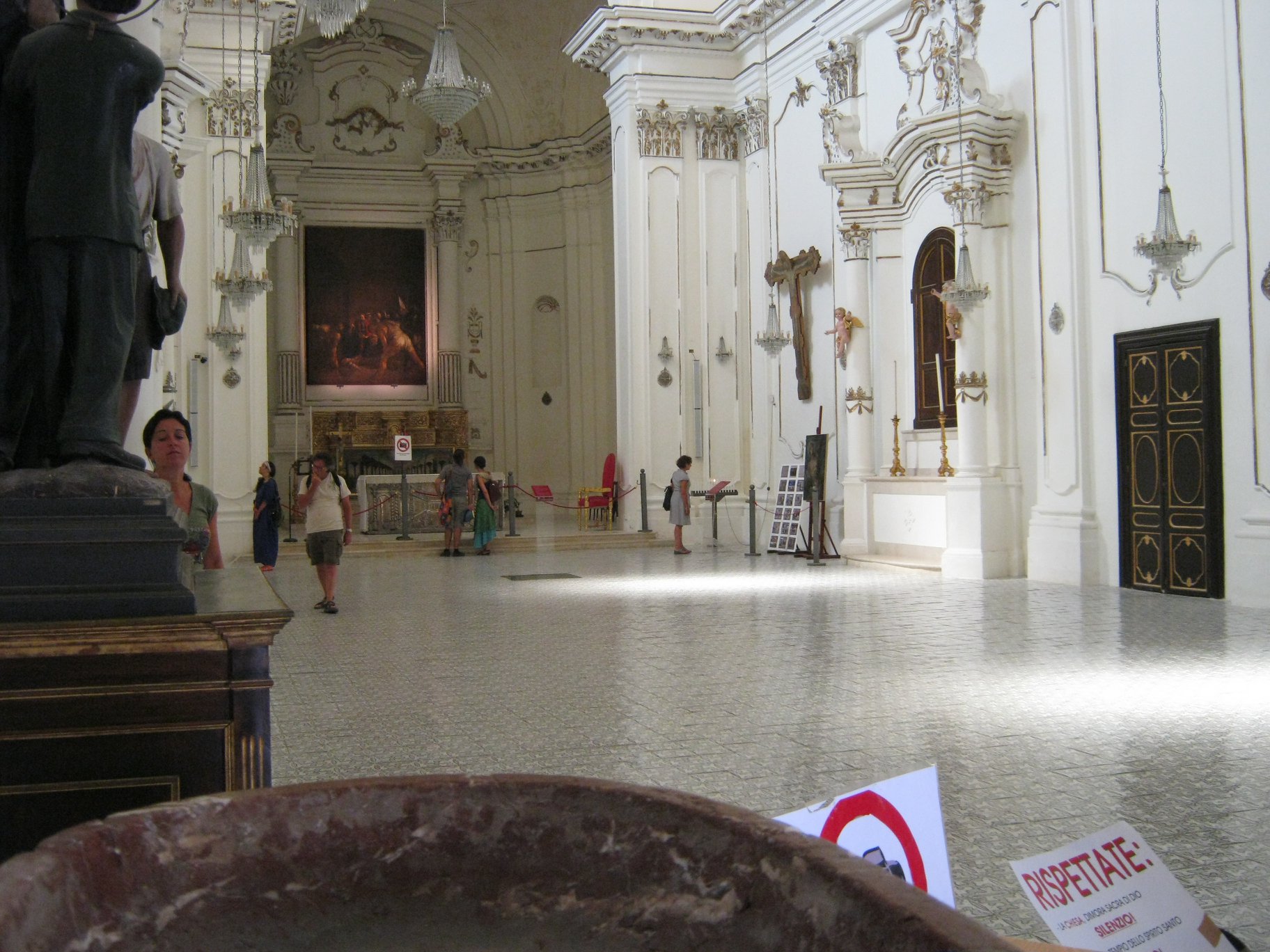
In 1783 the church was beautified by a large fresco depicting the miracle of Saint Lucia in 1646. It is said that during the famine of that year, while the faithful were gathered in the church to ask for help to the saint, a dove rested on the bishop’s throne and at that same time came the news of the arrival of a ship full of supplies. Since then, every year on the first Sunday of May, “St. Lucy delle Quaglie” is celebrated; the name derives from the nuns’ custom of freeing doves and quails during the feast.
The Church of St. Lucy alla Badia houses the“Buryal of St. Lucy”,one of the last works painted by Michelangelo Merisi known as Caravaggio (1571-1610) before his untimely death only two years after his stay in Syracuse.
The painting was long exhibited in the museum of Palazzo Bellomo and then at the church of St. Lucy al Sepolcro before being transferred, in 2009, in the Church of St. Lucy alla Badia.
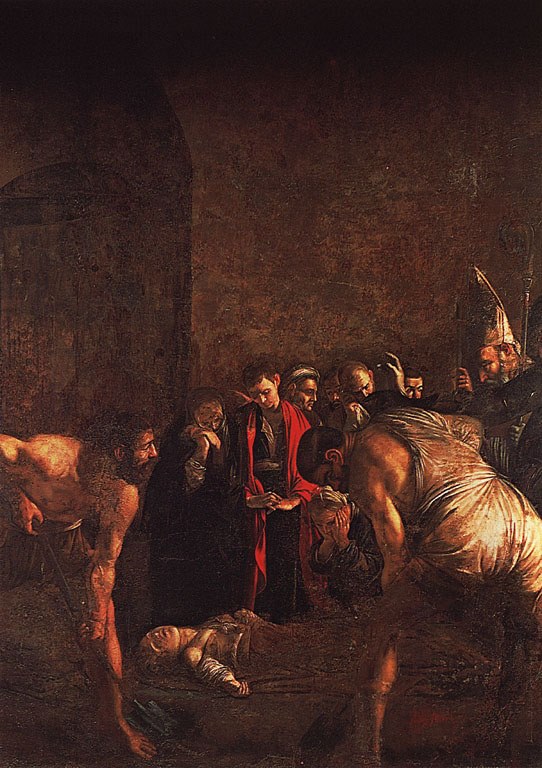
Caravaggio was in Syracuse during the years of runaway following the killing of a rival during a duel that took place in Rome on 28 May 1606. The death sentence by beheading that followed had prompted Caravaggio to seek protection even on the very distant island of Malta, where he could count on the support of the Order of Malta, which invested him with the office of “knight of grace”. But also in Malta Caravaggio had problems with justice and had been arrested. After escaping from the Valletta prison, he took refuge in Syracuse and was later expelled from the Order because he was considered a “fetid and putrid member”.
In Syracuse Caravaggio could count on the protection of his painter friend Mario Minniti and probably through his intercession obtained to work for the Senate of the city that commissioned him the “Burial of St. Lucy” intended for the high altar of the church of St. Lucy at the Sepulchre. In Syracuse, however, Caravaggio did not feel very safe given the short distance from Malta. So at the end of 1608, accompanied by his friend Mario, he went to Messina and then to Naples. When he heard from Rome that Pope Paul V was preparing to lift his death sentence, in July 1610 Caravaggio set out for Rome, a destination he never managed to reach as he died in the Argentario on 18 July 1610.
In the Burial of Saint Lucia, Caravaggio does not portray, as was generally customary, the moment of the saint’s martyrdom; instead, he represents the burying. The viewer’s point of view is at ground level, where the martyr’s body lies. Everything is suspended, slow; the group of characters on the right attends the scene, but the fulcrum of the composition is on the left, where the two enormous figures of the burialers slowly dig the grave and serve to concentrate the viewer’s gaze on the face of the dead. The painful event takes place in the lower part and the characters are surmounted by an immense empty, desolating space, perhaps a reference to the underground and dark rooms of the catacombs below the Church of St. Lucy at the Sepulchre for which the painting was made. The saint has a cut wound on her neck, but if you look closely at the texture of the painting, the head initially appeared detached. Caravaggio’s obsession with the theme of beheading and the nightmare of ending up executed are well known. In fact, there are countless works on the subject of historical figures with their heads cut off, such as the various drafts of David with the head of Goliath or the Salome with the head of the Baptist.
OPENING HOURS AND PRICES
Location: Via Santa Lucia alla Badia, 2 – Isola di Ortigia – Siracusa
Contacts: +39 0931 65328 – Curia Arcivescovile di Siracusa
FREE ENTRY
OPENING HOURS: From Tuesday to Sunday, from 11.00 a.m. to 4.00 p.m.
Closed on Mondays

